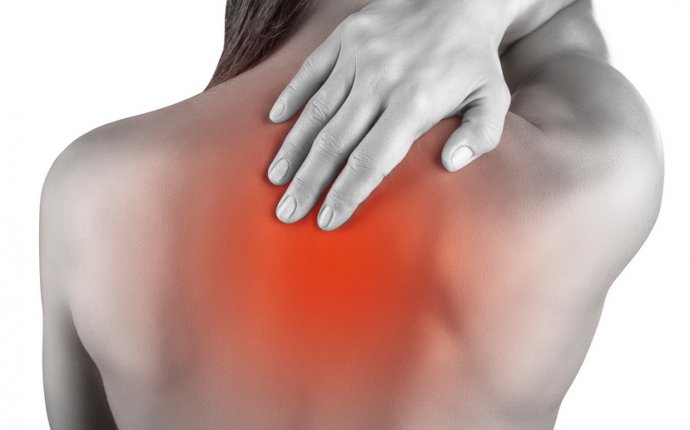
Mid back pain Relief Stretch
![]() Pain can develop in several parts of the back, including the middle region. If muscle tightness and joint stiffness are contributing to mid-back pain, stretching this area can help. Stiffness often settles into the mid-back due to poor posture and aging. Performing stretches and motion exercises can help minimize these effects by loosening up the tight areas. A few simple exercises that focus on mid-back mobility include chest stretching, forward and backward bending and a spinal twist.
Pain can develop in several parts of the back, including the middle region. If muscle tightness and joint stiffness are contributing to mid-back pain, stretching this area can help. Stiffness often settles into the mid-back due to poor posture and aging. Performing stretches and motion exercises can help minimize these effects by loosening up the tight areas. A few simple exercises that focus on mid-back mobility include chest stretching, forward and backward bending and a spinal twist.
The chest muscles can have a lot to do with what is felt in the back. Poor posture and prolonged sitting and slouching over a computer place strains on your back. Chest muscles often become overly tight to accommodate the slouched position, and chest stretches can help combat this tightness. A foam roller, which is similar in appearance to a swimming pool noodle, is a good tool to help improve flexibility. A simple stretch of the chest muscles involves lying on your back atop the foam roller, with the roller running down the length of your spine. As your arms are stretched out to the sides, with palms facing up, a gentle pull should be felt throughout the chest and front of the shoulders. Loosening these muscles can help you pull your shoulders back and stand up straighter.
Improving forward and backward bending of the mid-back can also ease back stiffness and pain. An exercise to work on these motions starts with getting on your hands and knees. Arching the back up toward the ceiling - making it rounded - works on forward bending. Sagging the back downward toward the floor, going for an upward facing C-shape, works on backward bending. Moving between arching and sagging helps the mid-back joints and muscles. If you are an older woman, you may be interested to know that a study in the August 2004 issue of "Spine Journal" found that older women had more muscle stiffness while bending backward than younger women.
Twisting, or rotating the spine to the right and left, is necessary for many daily tasks. A spine twist is a stretch that can increase rotation and decrease stiffness, which allows greater ease with movement. This exercise begins by lying on your back with arms out to the sides. One leg is bent up at the knee, and one leg is straight. The bent leg rotates over the straight leg, twisting the hips and lower spine, moving toward the floor on the opposite side of the body. This exercise is performed in both directions. During this exercise, stretching may be felt throughout the middle back, ribs, and hips.
If pain or stiffness worsens, you should see your doctor. Not all pain in the thoracic region is due to poor posture and stiffness, so stretches may not always provide relief. Stretches should not be performed if you've had a recent back fracture or other injury or if you are experiencing sharp pain. They should also be avoided if you have hypermobility - too much motion in your spine - as stretching may worsen this condition.









